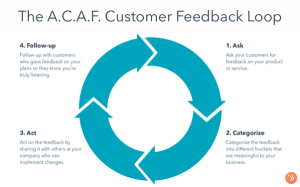What is visual commerce and how does it prove ROVI?
As we near the six-month milestone in the new world of the digital customer experience, one often overlooked segment is now more relevant than ever—visual commerce.
But what is visual commerce? 3-D images? Video sales calls? Visual commerce is much more than just these tactics, which proactive marketing departments are getting to know as they adjust to the new normal.
“The transition that people expected to take four years has occurred in four months,” said Chris Beaudin, director of marketing for Atlatl Software, a visual commerce platform. “It is a drastic mental shift that is now a necessity. A lot of big companies were dragging their feet, making the back end a priority, now they have to play catch-up.”
Founded as a CPQ software vendor for the manufacturing industry in 2013, Atlatl quickly morphed into a visual commerce platform after identifying the void in the marketplace.
According to Atlatl:
- 93% of human communication is visual;
- Humans process visuals 60,000 times faster than other forms of communication; and
- Humans remember 80% of what we see.
“Augmented reality and virtual reality have been around for a long time but always felt futuristic with no practical use for most companies,” said Beaudin. “These companies let other marketing tactics take priority, but when COVID hit they had to admit that they would have been in a much better place if they had made visual commerce a higher priority.”
Defining visual commerce
So what is visual commerce?
It can be as sophisticated as using a visual digital platform to sell a car, where you can experiment with different colors, interiors, seating material and even digitally place the car in your driveway to see if it clashes with the color of your house. Or visual commerce can be much simpler and less expensive like identifying the right size, material and length of that elusive black cocktail dress for your Saturday night dinner party.
Whether you are selling cars or cocktail dresses, there are three fundamental steps of visualization in the commerce process:
- Product visualization—seeing the product;
- Visual configuration—changing options, and;
- Augmented reality—looking at the product in your driveway, living room or with a matching pair of shoes
“These are all subtle emotional ways to connect with your buyer to influence the purchase, which is your goal as a marketer,” said Beaudin. “They own it digitally so naturally they want to own it physically.”
The buyer experience in visual commerce has transitioned from three-dimensional images and generic aerial photos to a tech-savvy general public that is often more concerned about what they cannot see than what they can see.
“It really is about reverse buyers’ remorse,” said Beaudin. “You want the buyer to feel in control as they are selecting the item in the sales process, [rather than] being sold the item. It makes a big difference.”
What is ROVI?
We are all familiar with ROI in the business world, but in the world of visual commerce Atlatl and their peers talk in terms of ‘ROVI,’ Return on Visual Investment. Committed visual commerce campaigns have significantly less overhead as integrated visual displays and platforms can replace onsite sales staff and expensive marketing material. Also, the ability to offer a prospective buyer the same visual commerce experience 24 hours a day is extremely important in the current environment.
But just exactly who is doing visual commerce the right way?
“We find that B2B companies have been more proactive in the space and made the transition a lot easier,” said Beaudin. “The construction and manufacturing industries were definitely ahead of the game and now it is paying dividends in ROVI. You also have traditional marketing giants like Apple and Nike province once again why they are innovators in the B2C space by embracing visual commerce and having those campaigns add to their bottom line.”
Beaudin’s estimate on ROVI is a return of about 10 times the initial investment. According to Atlatl, 85% of consumers are willing to pay more for a better experience, which begins as soon as they physically step through the door, or visually lock eyes on that desired item.
“With all of the budget uncertainty every industry is experiencing, now is the time to fully commit to visual commerce,” said Beaudin. “Visual commerce is all about speed, accuracy and experience. It is more of a challenge to bring together initially, but in the long-term it enhances the customer experience and expands your customer base.”
This story first appeared on MarTech Today.
Marketing Land – Internet Marketing News, Strategies & Tips
(40)
Report Post





